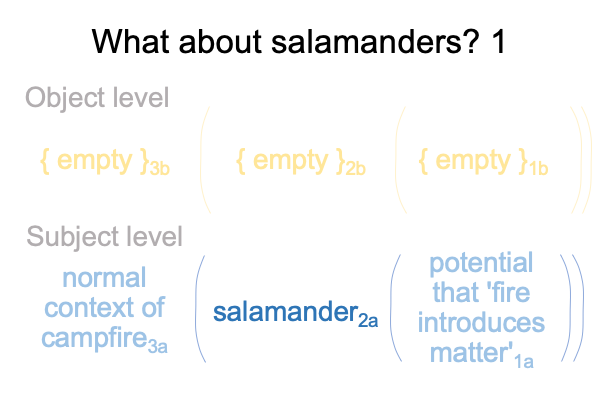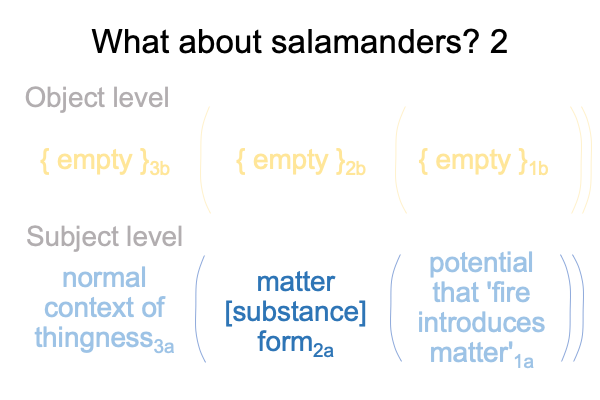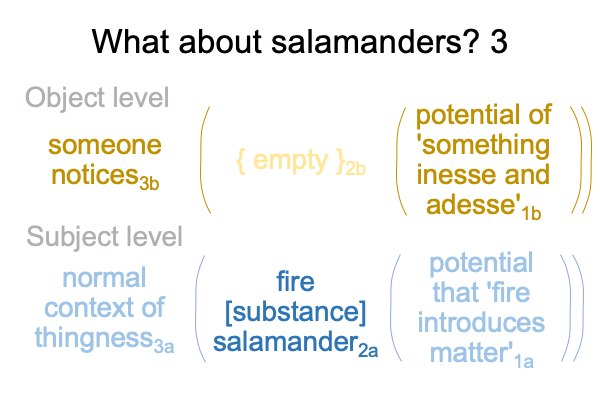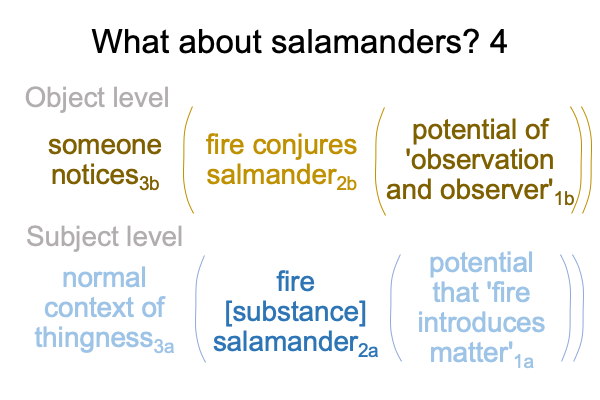0112 Let me return to the salamander business.
Let me play the role of a perplexed schoolman in (say) the early 1600s. Europe is on fire, both metaphorically and literally. Huge wars. Weird weather. Some rivers flood and other run dry. Rumor has it that a dog is born with three heads. Gold and silver from the new continent drive Spanish aristocrats mad. Like the protestants, the aristocrats think that money is a sign of God’s favor. So, the time has come to go to war.
At least, Fernando Suarez’s books are best sellers.
0113 Then, there are reports of salamanders. For centuries, salamanders stand for birth in fire in regards to observations at campfires. Now, the mechanical philosophers from the north say that the claim is nonsense and superstition.
Ugh. Three items. And, I only have two sets of applicable distinctions.
0114 What about salamanders?

Salamanders are things. Things belong to ens reale. Natural philosophy says, “Consider things in terms of two contiguous real elements, matter and form.”

0115 The form is the salamander. The matter must be fire. The essence is substantiated form, that is, a real salamander dashing from a sizzling log. The esse_ce is matter substantiating. The presence of esse_ce in the thing produces a potential for ‘something inesse‘. That ‘something’ associates to the proximate fundament, the observed sign.
Also, the fact that someone notices means that something in the actuality of matter has the potential to be noticed. So, the presence of esse_ce in the thing produces a potential for ‘something adesse‘. That ‘something’ associates to the remote fundament, the one who observes the sign.
0116 Here is a picture.

0117 The missing element2b belongs to the remote fundament.
The missing element2b is also ens rationis.
So, what do scholastics conclude, with the approbation of common folk?
Fire births salamanders2b. This is a kind of expression, in Latin, a species expressa.

